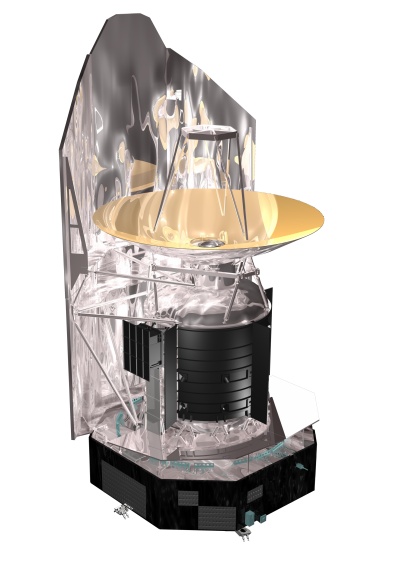| Version 9 (modified by Jzandin, on 08/02/12 at 17:47:15) (diff) |
|---|
Herschel
The Herschel Space Telescope is the fourth cornerstone mission in the ESA science program. When launched in October 2008, Herschel will be the largest space telescope of its kind when launched. Herschel's 3.5-metre diameter mirror will collect long-wavelength infrared radiation from some of the coolest and most distant objects in the Universe. Herschel will be the only space observatory to cover the spectral range from far-infrared to sub-millimeter wavelengths.
Infrared radiation is invisible for the human eye. It is actually 'heat', or thermal radiation. Even objects that we think of as being very cold, such as an ice cube, emit infrared radiation. For this reason, infrared telescopes can observe astronomical objects that remain hidden for optical telescopes, such as cool objects that are unable to emit in visible light.
Also, infrared instruments need to be cooled down to temperatures very close to absolute zero (-273.15°C), otherwise their own infrared emission would spoil the observations. Opaque objects, those surrounded by clouds of dust, are another speciality for infrared telescopes: the longer infrared wavelengths can penetrate the dust, allowing us to see deeper into such clouds.
However, Earth's atmosphere acts as an 'umbrella' for most infrared wavelengths, preventing them from reaching the ground. A space telescope is needed to detect this kind of radiation invisible to the human eye and to optical telescopes. Astronomers have long dreamed of a telescope able to collect light from very distant galaxies and observe objects completely enshrouded by dust, as forming stars and galaxies are certainly dusty.
ESA's Herschel mission has been designed specifically to achieve these goals. With its ability to detect far-infrared light, it will let astronomers see, for the first time, dusty and cold regions that have been hidden so far. With its 3.5-metre mirror, Herschel will mark the beginning of a new generation of 'space giants'.
The two main computers of Herschel, the Command and Data Management Unit (CDMU) and the Attitude Control Computer (ACC) are instances of the RUAG Spacecraft Management Unit (SMU). In both Herschel and Planck, the SMU’s Processor Module is built around a SPARC V7 processor, the TSC695F, and a custom I/O ASIC.
The RTEMS version used in Herschel CDMU, Herschel ACC, Planck CDMU and Planck ACC is RTEMS 4.5.0 (with a number of patches applied).
References
Attachments (1)
-
Herschel-Small.jpg (47.6 KB) - added by Amar Takhar on 11/23/14 at 05:07:15.
Imported from old wiki.
Download all attachments as: .zip
![[RTEMS Logo]](/images/logo.png)
